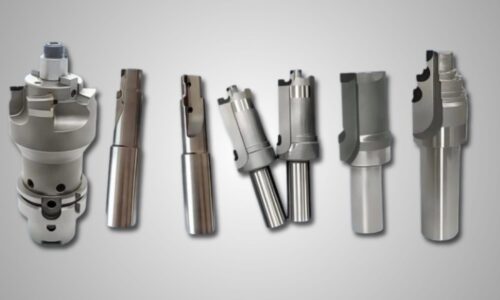
The Importance of Stationary Dressers in Diamond Tool Maintenance
- By akshada
- Posted on
Introduction
Diamonds cannot be exclude from the industrial machining and material processing sectors because of their unique relevance in cutting, grinding, and shaping the most complex materials. However, all such tools for the diamond tools require regular maintenance so as to enhance the performance level as well as the durability of the machine. This is where stationary dressers come into play.
They are fixed types of dressers that maintain the diamonds on the tool, ensuring proper shape, sharpness, and performance levels. The stationary working dresser dresses or conditions the face of the diamond tools, guaranteeing efficiency, high-quality end products, and saving costly boring time. This guide will discuss the relevance of the stationary dressers, particularly in the maintenance of diamond tools, the available types of the dressers, and the various gains that manufacturers and industries will derive from them.
Understanding Stationary Dressers
Fixed dressing equipment is very important in the resharpening and general care of diamond tools. While rotary dressers move in rotary motion during the dressing process, the stationary dressers stand still while the grinding wheel or any other diamond tool moves against. This interaction sharpens and ensures that the diamond tool has its geometric accuracy restored so that it can work optimally.
From where are stationery dresses manufactured?
Most stationary dressers are made up of substances such as single-point diamonds, multi point diamonds or impregnated diamond blocks. These materials are selecte on the basis of their high hardness, wear resistance and abrasiveness and are therefore very suitable for dressing diamond tools used in many industries.
Types of Stationary Dressers
The various designs of stationary dressers available in the market are likely to be use depending on the requirements of diamond tool maintenance. Knowledge of these types can go a long way in aiding a manufacturer to choose the proper dresser for his application.
a) Single-Point Diamond Dressers
Single point diamond dressers are those in which a single diamond is tipped on a metal shank. This type is the simplest type and the most commonly used for dressing and truing small grinding wheels.
- Uses: The single-point dresser is useful when only a single point is required and is usually used in normal dressing processes.
- Benefits: These are accurate, convenient and cheap in terms of cost.
b) Multi-Point Diamond Dressers
Multi-point diamond dressers are those tools that have a number of diamond points set in a matrix. These dressers are for a better and more uniform approach to dressing and improve the longevity of the tool.
- Uses: Multi-point dressers apply on big grinding wheels that have enhanced capabilities in exercising heavier operations.
- Benefits: They can offer enhanced wear resistance, increased tool durability and enhanced surface finish.
c) Impregnated diamond dressers
Fabricators can create impregnated diamond dressers by placing diamond particles into a metal preforming material.These dressers are useful for dressing hard and dense materials, especially when there is a tendency for failure in the dressing operation.
- Uses: “Impregnated dressers work best for accurate grinding practices and high-speed grinding wheel applications.”
- Benefits: “These deliver consistent performance, reduce wear and tear, and excel in applications where tight tolerances are required.”
d) Form Dressers
Stationary dressers are further subdivide into form dressers; they are design and utilize to make a given form or profile on the grinding wheel. They are normally employe in cases where the built-in geometry of the grinding wheel has to coincide with a specific form or profile.
- Uses: Form dressers are employe in high-end operations, including tool and die applications.
- Benefits: They enable the users to exercise a good level of prevention on the shape and profile of the grinding wheel to enable good machining.
The Role of Stationary Dressers in Diamond Tool Maintenance
Stationary dressers play a crucial role in the maintenance of diamond tools by performing several key functions.
a) Restoring Sharpness
Due to the fact that during the cutting process the diamond tools undergo wearing, material and debris buildup on the cutting edges, thus resulting in dullness. Static workbenches are use to sharpen these tools so that these conveyors can take the sharpened tools and use the material to remove the dull layer and expose new diamond surfaces for cutting purposes.
b) Maintaining Shape and Geometry
As mentioned earlier, the tool form of a diamond tool plays a critical role in precision machining; therefore, the actual shape and geometry of the tool need to be maintaine. Static idlers assist in correcting and aligning the working platform of the tool back to its original form and are capable of providing constant performance.
c) Enhancing Tool Performance
Therefore, dressing diamond tools with stationary dressers on a daily basis can go a long way in improving the performance of the tools. Accurately aligned operational tools provide smooth and thin cutting edges, causing less friction and hence less heat production than improperly aligned cutting instruments, to provide better finishes on the surfaces and a longer working life.
d) Reducing Downtime
Daily usage of hefty and highly-powered stationary dressers requires consistent tool maintenance to minimize tool failure and the requirement of replacements. This results in reduced time being spent on the production process, something that can greatly enhance the productivity rate.
Benefits of Using Stationary Dressers for Diamond Tool Maintenance
There are numerous benefits to using stationary dressers for maintaining diamond tools:
a) Increased Tool Longevity
It is recommend that diamond tools be use with stationary dressers, and they should be maintaine very often in order to have a longer useful life for them. Manufacturers benefit from the optimal quality of the tools by minimizing the frequency of replacements
b) Consistent Quality
Fixed-position dressers maintain the original shape and geometry of diamond tools to guarantee consistent quality in machining and cutting.”
This kind of consistency is particularly essential, especially in industries that depend on precise tolerance levels, including the aerospace, automotive, and electronics industries.
c) Improved Efficiency
The use of workdressers, or what is consider stationary dressers, increases the cutting and grinding performance of the diamond tools. These materials cause less stress to be apply to them to perform a given duty; hence, they experience less tear and cut down on energy usage.
d) Cost Savings
The periodic maintenance of diamond tools with the help of stationary dressers is possible to save a lot of money. In this way, manufacturers can reduce their costs of operations by increasing tool life, decreasing the period of idling, and increasing productivity.
e) Enhanced Safety
Diamond tools that have been well maintaine do not harm anyone or damage the machinery in any way sometimes. Constant dressing with stationary dressers guarantees that the instruments stay in good condition, hence the reduction of the frequency of tool failure, which may cause unsafe working conditions.
How to Choose the Right Stationary Dresser
Selecting the right stationary dresser for your diamond tool maintenance needs depends on several factors:
a) Tool Material and Application
Depending on the general material type you have and which specific type of application you have in mind, there will be a different outcome. For instance, single-point dressers are suitable for simple dressing operations, while multi-point or impregnated dressers are useful in heavy or precision dressing operations.
b) Desired Finish
Decide the sort of finish that you want to achieve for your workpiece. Various kinds of dressers available in the market vary in the quality of surfaces they produce; therefore, one needs to select a specific kind that meets his or her requirement.
c) Tool Compatibility
It is essential to confirm that the stationary dresser would work well with the diamond tool and the wheel or the machine that is to be operate. Compatibility is therefore very important when it comes to dressing in order to get the best results and to enhance the durability of the tool.
d) Budget and Frequency of Use
First of all, look at the price or the cost of the equipment compared to the frequency of its utilization. Single point dressers are cheaper than multi-point or impregnated dressers, but the latter may be more economical if frequently used.
Best Practices for Using Stationary Dressers
To maximize the effectiveness of stationary dressers in diamond tool maintenance, it is essential to follow best practices:
- Regular Maintenance: “Regularly include dressing as one of the maintenance procedures for diamond tools.
- Proper Alignment: It is recommend to make sure that the stationary dresser is well position in a correct angle in relation to the tool to allow effective dressing.
- Consistent Pressure: Ensure equal force is apply to the dressing process in order to prevent uneven shapers or even damaging the tool.
- Monitor Wear: Steadily check on the gazebos and other stationary dressers so as to ensure the dressing material is in good shape and has no signs of wear that may be wear that needs replacement.
Conclusion
Fixed dressers are important when it comes to the maintenance of diamond tools, as they come with several advantages, like the durability of the tools, standardization, productivity, and economy, among others. This paper has identified the various classifications of the stationary dressers with their specific uses and, therefore, helps the manufacturers to ensure that they get the appropriate tool to maintain the life of their diamond tools.
Maintenance with stationary dressers also serves the purpose of improving tool efficiency while at the same time helping in reducing the risks at hand and increasing work productivity. Therefore, high quality stationary dressers and following the recommended guidelines in their utilization will enhance the efficiency of diamond tools, improving the general quality and accuracy of a company’s operations.
FAQs
Q1: What are stationary dressers use for in diamond tool maintenance?
A1: Here are stationary dressers that are use in sharpening the diamond tools/bits so that the geometry of the tools is maintaine so that their performance is enhance and the times that they can be use
Q2: How often should diamond tools be dressed with stationary dressers?
A2: The frequency that dressing is done with stationary dressers depends with the tool being use and the workpiece that is in the process. For the tool manufacturer to have the best results, it is advise that regular dressing be done, as encourage here.
Q3: What are the different types of stationary dressers?
A3: Different categories of stationary dressers are single-point diamond dressers, multi-point diamond dressers, impregnated diamond dresser and form dresses that are intend for different operations.
Q4: How do stationary dressers improve the performance of diamond tools?
A4: Static dressers enhance the performance of the diamond tools by means of truing, establishing the proper geometry of the cutting face of the tools, and breakout and removal of the built-up edge; this in turn results in increased cutting rate and longevity of the tools.
Q5: Can stationary dressers be use with all types of diamond tools?
A5:Yes, a stationary dresser can be use with nearly all the diamond tools but the right type of dresser needs to be use on the particular tool in order to get the best results.





